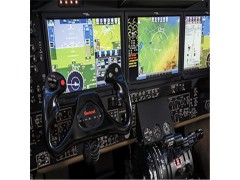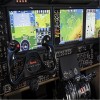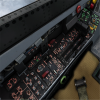Instrument Rating
The FAA has minimum requirements to receive an instrument rating:
1. Hold a current Private Pilot Certificate.
2. Read, write, speak English.
3. 3rd. Class medical.
4. Have completed 50hrs of cross-country flight as pilot in command.
(However, an instrument student does not need 50hrs cross-country time to begin his/her training. Many cross-country hours may be accumulated in the course of IFR training).
5. Have completed 40hrs of dual instruction in either simulated or ‘actual’ conditions. That is, ‘under the hood’ utilizing a view limiting device or in actual ‘in the clouds’ conditions.
Instrument Training is broken up into 3 stages:
First Stage: The student learns to control his aircraft without outside visual reference; that is in reference solely to the instruments. This will include climbs, descents and turns based upon a ‘Control and Performance’ model that will get the student acclimatized to flying by the ‘six pack’. (artificial horizon, altimeter, vertical speed indicator, turn coordinator, directional gyro, and tachometer). We will utilize our PA28-180 Piper Archer with dual VOR’s, glide slope and DME. The Archer is stable, fast and reliable and makes an excellent IFR ‘platform’ meeting all the requirements for instrument training.
Second Stage: We will take stage 1 skills and incorporate them into the larger picture of VOR, DME, localizer, and ILS navigation. We will utilize IFR approach and enroute maps to see Oregon and Washington’s airspace in a whole new way. With a little work, you will home to stations, intercept radials, hold at intersections and shoot approaches.
Third Stage: This takes your skills and puts them in the real world of weather, air traffic control, cross-country planning and emergency preparedness. The goal is single pilot confidence and proficiency in the IFR world. After this stage, you will be ready to pass the Instrument Rating check ride with an FAA approved examiner, and just as importantly, fly safely to new destinations in the clouds.






